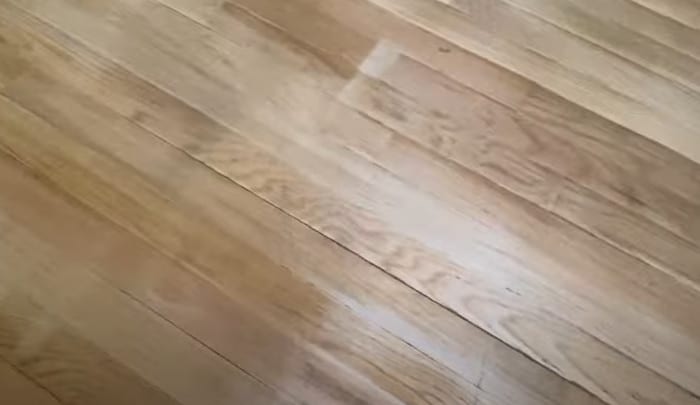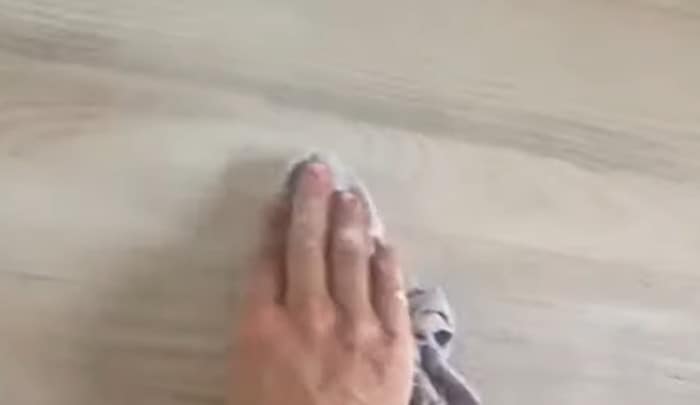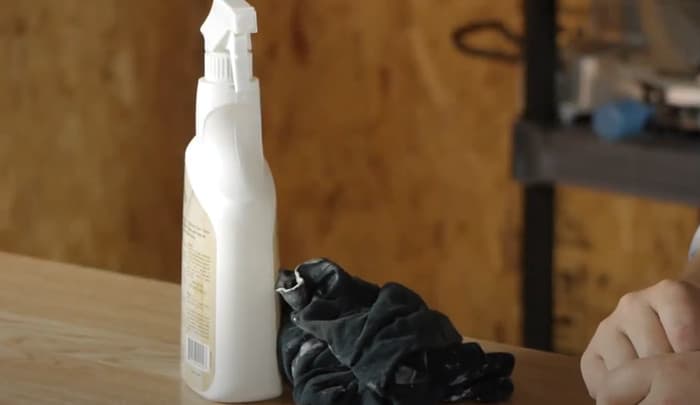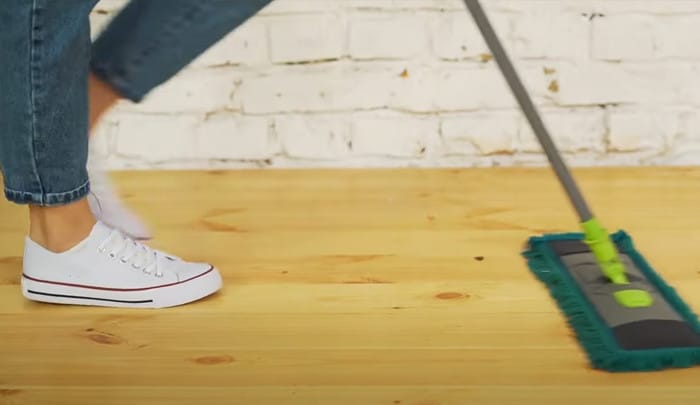Ready for a change in your home décor? Looking for an easy and cost-effective way to bring in some brightness to your laminate flooring? You’ve come to the right place! In this blog post, we’ll show you how to lighten laminate flooring in a few simple steps – no sweat and no hassle. With some basic supplies and a bit of elbow grease, you’ll have a new look in no time that will surely impress your guests!
You can lighten your laminate flooring by sanding it and then refinishing it with a lighter color of polyurethane. For best results, hire a professional to help ensure proper care is taken while sanding and refinishing.
“When lightening laminate flooring, patience and care are your best tools. As an interior designer specializing in floor renovations, I recommend testing any lightening methods on a small, hidden area first – this way you can see the result without risking the entire floor. Remember that less is more—if you rush the process, you can cause irreparable damage to the flooring. Trust in my years of experience, take your time, and the results will be worth it.”
Winfield Parchment., Interior Design Maestro
Scrubbing and Buffing Away Scuff Marks
Scrubbing and buffing away scuff marks from your laminate flooring is an effective way to restore its original luster. Before starting however, make sure to test the cleaning product you are using on an inconspicuous area of the floor first to ensure it does not damage the floor. Fill a bucket with warm, soapy water and use a microfiber mop to gently scrub the surface of your laminate floor. Focus on areas that have particularly noticeable scuff marks and be careful not to apply too much pressure as this could potentially scratch or dull the finish of the laminate flooring.
Once you have finished scrubbing, use a dry, clean cloth or buffing machine to polish and remove any remaining scuff marks. Buffers are most effective; however, if you do not have access to one then use a soft cloth instead. The drawback is that it will take longer and may require extra effort. Whichever buffer you use, move it in a circular motion to give your laminate floors an even appearance. For tougher spots, you may need to repeat the process until all of the visible scuffs are removed.
When done correctly, scrubbing and buffing away scuff marks can help revive faded laminate floors and return them to their former glory. Now that we have addressed how to remove dirt, dust, grime and polishing away scuffs from our laminate flooring, it’s time for the next step: sanding and polishing for a brilliant shine!

Sanding and Polishing to Shine
Sanding and polishing are two common techniques used to lighten and shine any laminate flooring. However, before attempting these methods, it’s important to understand how to stagger laminate flooring properly to ensure an even surface for treatment. Sanding, especially with orbital sanders, is an effective way to remove dirt and blemishes from the surface and can make a big difference in the look of your floor. Orbital sanders help to level out the surface of the laminate to create a uniform finish that’s both smooth and pleasing to the eye. It should be noted, however, that some flooring manufacturers recommend against using orbital sanders as they could potentially cause damage.
Polishing is also a great choice for making a laminate floor look more appealing and can brighten up the color considerably. Though polishing requires time and effort, it has longer lasting results than sanding alone. It can also help prevent future scratches as it creates a durable layer of protection over the floor’s surface.
Overall, sanding and polishing are both excellent solutions for achieving a lighter shade on laminate floors. Some people may prefer one method over another given their personal taste or skill set but there’s no denying that either approach is effective for revitalizing your laminate floor.
Now that you know how to lighten your laminate floor with sanding and polishing, let’s move on to exploring different cleaning solutions for stubborn stains!
Cleaning Solutions For Stubborn Stains
Cleaning solutions for stubborn stains on laminate flooring may range from mild to harsh depending on the severity of the stain. Milder options include a mixture of white vinegar and water, while harsher chemicals such as bleach should be used sparingly. When considering what cleaning solution is best suited for your needs, it’s crucial to be aware of how to clean sticky laminate floors without causing damage from harsh chemicals.
If one has doubts about properly cleaning their laminate flooring with milder solutions, it can be beneficial to clean the affected area with a steam mop or wet cloth instead. Using steam creates a high temperature which works to weaken dirt and bacteria, and this method can also be useful for removing wax from the surface of the laminate flooring.
However, if you feel more comfortable using chemical-based products, it is always important to read the product label thoroughly in order to understand any potential risks associated with their use. A good rule of thumb would be to test small areas with new products before applying them to ensure they will not cause any damage or discoloration to the flooring.
When all else fails, consider enlisting the help of a professional cleaner who specializes in cleaning hard surfaces like laminate flooring. Professional cleaners have experience dealing with a wide variety of difficult stains and may have access to stronger cleaning solutions than what one can find at a local store. They can also help with fixing laminate flooring that’s lifting, which can occur due to improper cleaning or moisture exposure.
No matter which cleaning solution you decide to use, safety should always come first when working with harsh chemicals. It is also essential to remember that any product used should be designed specifically for use on laminate floors—otherwise it may cause damage or discoloration over time. Now that we have discussed how to tackle stubborn stains, let’s move on to our next section about using bleaching agents for lightening laminate flooring.
Using Bleaching Agents
Using bleaching agents to lighten laminate flooring can be a fairly effective way to brighten the color of the surface. Generally, this is done with a solution of hydrogen peroxide and water. Many homeowners prefer to start with a concentration of one-to-one, which means equal parts hydrogen peroxide and water, but some may choose to increase the hydrogen peroxide solution if they are hoping for a greater degree of whitening on their floors.
The most important factor when considering using hydrogen peroxide is safety. When using any type of chemical solution, it is necessary to take all safety precautions to protect both your family and your floors. Always wear protective eyewear and gloves and make sure that you properly ventilate the room when using bleaching agents like hydrogen peroxide. It is also very important to understand that too much or too strong a concentration can cause fading or discoloration in certain types of laminate flooring products. Therefore, it is advised that if bleaching agents are used, homeowners should consider doing spot tests in inconspicuous areas before treating the entire surface.
Another argument against using bleaching agents is their short-term effect; while they can provide some temporary lightening, they often do not have a long-lasting result so the process may need repeating more frequently than other treatments. If bleach is used regularly on laminates it can actually lead to further yellowing in some cases due to prolonged exposure or incorrect application of the chemical solution.
Ultimately, whether one elects to use bleaching agents for lightening their laminate flooring depends on an individual’s level of risk tolerance and acceptable maintenance routine. For those who decide this approach works best for them, caution should always be taken while applying the chemical solution and following all safety guidelines detailed by the product manufacturer.
Moving forward, homeowners who would like to lighten their laminate flooring without chemicals may want to consider utilizing household products instead.

Top Highlights
Bleaching agents such as hydrogen peroxide can potentially lighten laminate flooring; however, it is important to exercise caution when using these products and to spot test in order to avoid discoloration. Additionally, bleaching has a short-term effect and may need to be repeated frequently to achieve desired results. Homeowners who would like an alternative solution without chemicals may turn to household products instead.
Utilizing Household Products
Using household products is one way to deep clean laminate floors and potentially lighten or whiten them without spending money on expensive solutions. Many items you might already keep around your home, such as bleach-based cleaners, vinegar, and baking soda, can all work to help brighten up the color in laminate flooring.
Bleach is a powerful cleaning agent that can lighten the color of your flooring if used correctly. If you choose to use it, read the instructions carefully and be sure to take any necessary safety precautions. It’s also important to use caution and test the cleaner on a small patch of the laminate first before applying it over the entire surface of the flooring. Mix 1/4 cup of bleach in a gallon of water and use a mop over the entire surface for best results. Be sure to dry the floor thoroughly afterwards.
Combining white vinegar with warm water is another way to clean your laminate floors so they look brighter, but make sure not to use too much vinegar or the floor may become streaky. Vinegar is an effective natural cleaner that will get rid of dirt and grim while restoring some of the original color back into your floors without causing any damage.
Baking soda is another natural solution for deep-cleaning your laminate flooring. Sprinkle baking soda over a damp mop and clean thoroughly while avoiding heavy scrubbing as it can scratch up the surface. Baking soda also helps absorb odors and will do wonders for getting out small spots or stains from spills or pet messes.
It’s important to note that no matter what method you choose when attempting to lighten up your floors, several applications may be required until you achieve desired results. Also, ensure that whatever product used does not cause damage to the floor material itself. Bear in mind that these techniques do not work for all types of stains and discolorations on laminate floors, so experiment at your own risk.
To start seeing better looking results after cleaning your laminate floors with household products, mop it up with liquid wax in the next section. The combination of wax and household products can magnify the natural brightness and shine of the floors giving them an even more radiant look overall.
Mop It Up with Liquid Wax
Mop It Up with Liquid Wax: Applying liquid wax to your laminate flooring not only helps protect it from damage, but also helps to lighten darkened area. Liquid wax adds a protective layer to the surface and prevents dirt, dust and grime from penetrating the laminate, while leaving behind a glossy finish.
When applying liquid wax, it is important to apply in thin layers rather than thick ones – too much product can leave behind a tacky layer or residue that will eventually dull your flooring even more. You should test different amounts of liquid wax in an inconspicuous corner of the room before applying to the entire surface. Additionally, always remember to use a soft cloth or sponge mop when rubbing in the product – hard bristles can tear away the finish and expose the underlying material.
While some people argue that regular use of liquid wax will keep floors lustrous for years to come, others claim this strategy can lead to accumulation of buildup build-up which further leads to discolouration and permanent smudges. Reapply only when necessary and opt for cleaner that are specifically made for laminate flooring to reduce potential harm caused by abrasive cleaning chemicals.
Now that your laminate flooring has been mopped up with liquid wax, the next step towards lighter floors is getting back the gloss.

Getting Back the Gloss
Getting back the gloss on a laminate floor requires some effort and tools, including a buffer or polisher and abrasive wax or polish. The former provides more complete coverage than buffing with a mop and requires more skill to control. Abrasive wax is the most effective product for making laminates shiny again. However, there are many products available that are specifically designed for lighter-duty cleaning of laminate floors, such as polishes that contain diluted cleaning chemicals.
These products can be beneficial in restoring shine to dull laminate floors but require significant effort and multiple applications, making them less efficient than an abrasive wax product. Additionally, these types of products can often leave a residue on the floor that is difficult to remove if too much is applied during initial use.
At the end of the day, the decision to choose an abrasive wax or a less intensive polish with chemical diluents depends on your level of comfort and expertise with using buffers or polishers, as well as budget constraints. Whichever you decide, make sure not to apply an excessive amount of either type of solution, and be mindful when buffing the floor that you maintain consistent pressure evenly across the surface to achieve an even shine.
Now that you’ve gotten back the gloss in your laminate flooring, it’s time to learn how to keep it lightened.
- Pergo, the largest manufacturer of laminate flooring, recommends using a mild detergent and warm water with a soft cloth to clean and lighten the floor.
- The National Wood Flooring Association recommends using non-abrasive lightweight cleaners such as white vinegar or ones specifically made for laminate flooring to lightly scrub the surface for deep cleaning purposes.
- According to Consumer Reports, chemical wood bleaches are effective at lightening stained laminate floors but should only be used if recommended by the manufacturer.
Keeping Laminate Flooring Lightened
Keeping laminate flooring lightened will depend on the type of flooring you have installed. There are pros and cons to both options.
Varnishing or sealing laminate flooring is an effective way to protect it from staining and discoloration. Varnish or sealant will also give a clear and glossy finish to the floor, making it look brighter and more vibrant in color. However, this method is not recommended for all types of laminate flooring, as some may not be suitable for sealing due to their composition. Additionally, varnishing or sealing does require some routine maintenance, as the finish could chip off over time.
A more cost-effective and maintenance-free option is to use laminates with a matte or satin finish instead of gloss. Matte finishes do not show dirt as easily compared to gloss finishes, meaning they will look cleaner and lighter for longer. Furthermore, they can generally be cleaned with a damp mop without causing any damage to the floor. The downside to this option is that matte finishes tend to look more muted than glossy finishes, so if you want a bright and shiny look, this may not be ideal.
Overall, preserving the lightness of your laminate flooring will come down to your desired end result. If you are after a bright and glossy look that requires minimal maintenance then consider varnishing or sealing your laminate flooring. Alternatively, if you have your heart set on a long-lasting matte or satin finish then speak to a professional about what types of laminates would work best for you.

Answers to Common Questions with Detailed Explanations
What are the best methods for lightening laminate flooring?
The best methods for lightening laminate flooring involve bleaching, whitewashing, or sanding. Bleaching works by using a strong oxidizing agent to break down the darkness of the laminate flooring. Whitewashing is a bit less abrasive and the results can be tailored to how much you want to lighten the floor. Finally, sanding is relatively simple and risk-free; it requires a sander to remove a top layer of laminate which in turn lightens the color. All three methods are relatively easy and cost effective so pick whichever one works best for your needs!
Are there any professional services available for lightening laminate flooring?
Yes, there are professional services available for lightening laminate flooring. Professional services can often provide results that are not possible with DIY methods, which makes them worthwhile to consider. They typically utilize specialized equipment and products that allow them to strip the existing finish from the floor, then apply a protective coating that prevents further fading from sunlight and normal wear and tear. Furthermore, professional services will often be better equipped to deal with any underlying issues or problems caused by the original installation, such as gaps between planks or improper adhesion of the adhesive.
Are there any home remedies for lightening laminate flooring?
The short answer is yes, there are some home remedies you can try to lighten your laminate flooring! With a bit of elbow grease and the right materials, you can make significant improvements.
Firstly, you may wish to try something natural like lemon juice or vinegar. Mix both ingredients together in a spray bottle and then spritz it onto your floors. Allow it to sit for 10-15 minutes and see if there is any improvement. If not, then move onto the next option!
Another method is to use bleach or bleaching powder. Make sure you dilute this with water as using it at full strength can damage the floors over time. Again, allow the mixture time to take effect and don’t leave on for too long before wiping away with a damp cloth.
Finally, you could also consider sanding down the floors with an orbital sander if the previous methods haven’t been successful. This will require more of an effort and potentially additional equipment, but if done correctly could help restore the original lightness of your laminate flooring.
To conclude, there are many ways you can tackle lightening laminate flooring in your own home so it’s worth trying out different options until you find what works best for you.
References
https://www.architecturaldigest.com/story/how-to-clean-laminate-floors
https://www.thisoldhouse.com/flooring/reviews/vinyl-vs-laminate-flooring





I found a creative workaround to incorporate lighter tones without entirely sanding, which could be time-consuming. I mixed a lighter paint with clear polyurethane and applied it to my laminate flooring using a sponge mop.
Florence, your idea of blending clear polyurethane with light paint is simply ingenious. I haven’t thought of this approach before, but I’m considering trying it for my own laminate flooring to add a unique flair.
Cybil, that’s an interesting way too but do remember that adding paint into clear polyurethane tends to dilute it slightly so make sure the coverage remains effective by doing a patch test first.
How very astute of you Zephyr! I’ve found that choosing the right color of polyurethane is an art in itself as it significantly impacts the overall ambiance. Doing a patch test is definitely a good advice to ensure you get your desired finish without dampening laminate quality. In my experience, using a semi-gloss polyurethane adds a sophisticated touch while creating an illusion of extra space due to its light-reflecting properties.
I removed a lot of dark laminate flooring in my old apartments and changed it into lighter ones because they make spaces appear brighter and larger. I agree with Xanthe on using semi-gloss polyurethane for an additional sophisticated touch – worked wonders for me! Remember, patience is key in sanding and refinishing, don’t rush the process.
I’m appreciating your patience advice, Giuseppe. I can’t stress enough how important it is not to rush refinishing jobs. The difference between a quick sand-and-dash job and one done with care is like night and day – I’ve seen too many regrettable mistakes made by people in a hurry.
I recall working on an antique oak laminate floor that had darkened drastically over time, sanding it was quite a task but applying the lighter polyurethane really revived it.